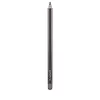What's inside
What's inside
 Key Ingredients
Key Ingredients

 Benefits
Benefits

 Concerns
Concerns

 Ingredients Side-by-side
Ingredients Side-by-side

C10-18 Triglycerides
EmollientHydrogenated Vegetable Oil
EmollientCaprylic/Capric Triglyceride
MaskingTalc
AbrasiveSynthetic Japan Wax
EmollientTocopherol
AntioxidantAscorbyl Palmitate
AntioxidantMica
Cosmetic ColorantCI 77891
Cosmetic ColorantCI 77491
Cosmetic ColorantCI 77492
Cosmetic ColorantCI 77499
Cosmetic ColorantCI 77163
Cosmetic ColorantCI 42090
Cosmetic ColorantCI 75470
Cosmetic ColorantCI 77742
Cosmetic ColorantCI 15850
Cosmetic ColorantCI 45380
Cosmetic ColorantCI 45410
Cosmetic ColorantCI 73360
Cosmetic ColorantCI 19140
Cosmetic ColorantCI 15985
Cosmetic ColorantCaprylic/Capric Triglyceride
MaskingRicinus Communis Seed Oil
MaskingMangifera Indica Seed Butter
Skin ConditioningEuphorbia Cerifera Wax
Mica
Cosmetic ColorantRhus Succedanea Fruit Wax
Hydrogenated Jojoba Oil
AbrasiveCopernicia Cerifera Wax
Limnanthes Alba Seed Oil
Skin ConditioningArgania Spinosa Kernel Oil
EmollientGlyceryl Caprylate
EmollientTocopheryl Acetate
AntioxidantAscorbyl Palmitate
AntioxidantIron Oxides
CI 15850
Cosmetic ColorantCI 77891
Cosmetic ColorantCaprylic/Capric Triglyceride, Ricinus Communis Seed Oil, Mangifera Indica Seed Butter, Euphorbia Cerifera Wax, Mica, Rhus Succedanea Fruit Wax, Hydrogenated Jojoba Oil, Copernicia Cerifera Wax, Limnanthes Alba Seed Oil, Argania Spinosa Kernel Oil, Glyceryl Caprylate, Tocopheryl Acetate, Ascorbyl Palmitate, Iron Oxides, CI 15850, CI 77891
 Reviews
Reviews

Ingredients Explained
These ingredients are found in both products.
Ingredients higher up in an ingredient list are typically present in a larger amount.
Ascorbyl Palmitate is created by combining pure Vitamin C and palmitic acid. It is an antioxidant and helps reduce hyperpigmentation.
This ingredient is a more stable version of Vitamin C, meaning it does not disintegrate as quickly when exposed to sunlight. However, studies show it does not penetrate skin as well as pure Vitamin C.
Ascorbyl Palmitate is oil soluble.
Read more about other types of Vitamin C:
Learn more about Ascorbyl PalmitateThis ingredient is an emollient, solvent, and texture enhancer. It is considered a skin-softener by helping the skin prevent moisture loss.
It helps thicken a product's formula and makes it easier to spread by dissolving clumping compounds.
Caprylic Triglyceride is made by combining glycerin with coconut oil, forming a clear liquid.
While there is an assumption Caprylic Triglyceride can clog pores due to it being derived from coconut oil, there is no research supporting this.
Learn more about Caprylic/Capric TriglycerideCi 15850 is the pigment color red. It is an azo dye and created synthetically.
Azo dyes need to be thoroughly purified before use. This allows them to be more stable and longer-lasting.
This ingredient is common in foundations, lipsticks, and blushes. This color is described as brown/orangey red.
It has many secondary names such as Red 6 and Red 7. According to a manufacturer, Red 6 usually contains aluminum.
Learn more about CI 15850Ci 77891 is a white pigment from Titanium dioxide. It is naturally found in minerals such as rutile and ilmenite.
It's main function is to add a white color to cosmetics. It can also be mixed with other colors to create different shades.
Ci 77891 is commonly found in sunscreens due to its ability to block UV rays.
Learn more about CI 77891Mica is a naturally occurring mineral used to add shimmer and color in cosmetics. It can also help improve the texture of a product or give it an opaque, white/silver color.
Serecite is the name for very fine but ragged grains of mica.
This ingredient is often coated with metal oxides like titanium dioxide. Trace amounts of heavy metals may be found in mica, but these metals are not harmful in our personal products.
Mica has been used since prehistoric times throughout the world. Ancient Egyptian, Indian, Greek, Roman, Aztec, and Chinese civilizations have used mica.
Learn more about Mica